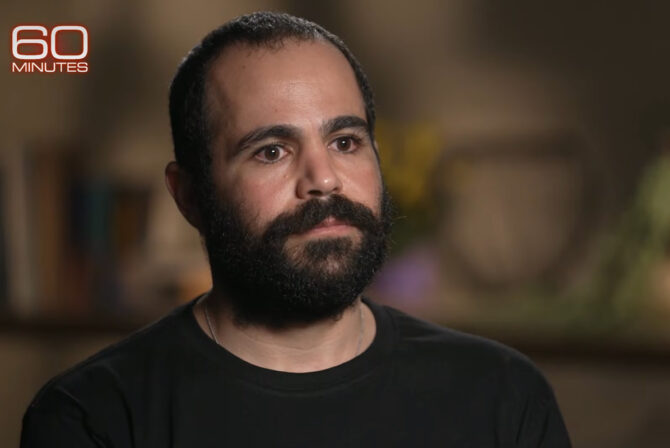This weekend, the New York Times ran a story that, if you have teenagers, probably made you want to steal their cell phones, burn them and give them tin cans on a string to use instead.
The article told the terrible tale of a 14-year-old eighth grade girl in Washington state who, in a moment of attempted sexiness and extreme naivete, texted a naked photo of herself to the boy she’d hoped would be her boyfriend. In less than 24 hours, the photo had rocketed through the whole middle school, humiliating her and leading to three kids being charged with dissemination of child pornography.
The article is being emailed around as the quintessential cautionary tale of the digital age. The story encapsulates so many of the ills that plague our modern society, and preys into the ever-recurrent fear of parents: You Are Living A Childhood Completely Different From Mine, And The Trouble You Can Get Into Scares The Hell Out Of Me. Every generation is scared of the trouble its children can potentially get into. You don’t think moms in the early 1900s felt this way when their little girls stopped wearing bloomers to the beach? With each generation as we speed ahead technologically, though, it seems as though the gap becomes more and more extreme.
I don’t know about you, but my kids don’t have cell phones, and at this point, I’m not even sure that they both know our home phone number. I’m also quite sure that both boys have no desire whatsoever to see a naked girl (they’re not even big on many of the ones who keep their clothes on). In short, on a certain level, my kids are (thankfully!) way too young to have these problems.
But they’re only too young for the moment, sadly enough. It’s never too early to teach the following points, explicitly and through example, so as to (hopefully) ensure that your kids never think something like this is okay.
Bullying Is Wrong…All The Time.
Yes, it’s important that your kid learn how to say please and thank you and be nice to other people. That’s a given. But it’s entirely possible that in some situations, it may be your kid who’s the bully. This is a really hard concept for any parent to get their mind around – the idea that your little sweetie may be the one who is making a fellow kindergartener’s life a living hell.
I actually know this one way too well because one of my sons — whom I happen to think is a great guy — was apparently being a real jerk to his cousin in the carpool on the way home. Now admittedly, many people seem to think there’s a sibling/family exemption to bullying. There isn’t. He and I talked about it. Apparently, it didn’t make a difference, which was even harder to admit.
But then I went into more of the reasons why it’s not okay, i.e. the things you’d think would be self-evident, like if you care about someone, you don’t want them to be hurt or feel bad, and even if they can be occasionally annoying, you can’t hurt their feelings. That seemed to ring more of a bell. And now he’s a perfect child. Well, not really, but better. I also told him that every time crap goes down, he loses some Lego. Some combination of the two of those things hit home.
Create an environment of empathy.
Apparently, it is also not self-evident to kids that they are not the center of the known universe, and that other people’s feelings can actually be just as valid as their own. Establishing an environment of empathy is a two-track process: ask and exemplify.
Ask: Ask what happened at school and listen to the answers. When the dramatic saga of Charlie-hit-Justin-and-got-a-time-out is recounted, ask how your kid thinks Justin felt, and how Charlie felt. Also, ask questions when you’re playing at home with the kids. When you’re reading a story, stop reading for a second to ask how the characters felt at a certain point, and why. Give the kids the opportunity to see the world through someone else’s eyes: it may not even occur to them otherwise.
Exemplify: Let your kids see you call your sister to ask if she’s feeling better, or if there is any way to help her out. Explain why you’re doing what you’re doing (“My friend Abby just had a new baby, and she’s probably really busy – so I’ll call her to see if there’s something I can do to help out, like pick up more diapers when I go shopping.”). This is the more implicit part of the education. You’d be surprised how much kids ‘get it.’
If your kid can empathize with other people, the chances of them doing something thoughtless to hurt someone else are less.
Create a world where your children feel comfortable being honest with you.
If your kids are afraid to tell you something they did wrong…well, on the one hand, that’s the sign of a conscience. On the other, you don’t want their fear of the ramifications to be so great that they override the impulse to confide in you. It’s a hard balance to strike.
When your kids do something stupid (and I know it happens!), try to talk to them rather than flipping out. This is hard to do (at least it is for me), because the voice naturally goes into that Register of Death/Doom/God. Take a breath or two and talk to your kid. I’m not saying to say something like, “I’m glad you were honest about murdering the next door neighbor – that’s what’s important.” But rather, to create an environment where they listen to, rather than fear, the response from you. OK, listen and fear is also all right. But let’s focus on listening, shall we?
Actions Have Consequences.
I have trouble with this one. It goes something like this.
Me: Don’t hit your brother. If there’s any more hitting up here, there’s no Harry Potter tonight.
(Three seconds later, I walk down the hall to put something in another room. I hear the unmistakable ‘whack’ of one brother hitting another, accompanied by the inevitable “Mommy!! He hit me!!”)
So what should happen now?
Now, if you’re me, you REALLY like bedtime stories. They are moments when you get to feel all warm and fuzzy with your kids, relaxed and cozy. You look forward to it all day. But you said it before – if there’s any more hitting, no more Harry Potter. Now what?
It’s all too easy to give them “another chance.” I’ve heard pleas for “another chance” so often that I am thinking of wrapping up placards that say “another chance” and giving them to the 5 year old for his birthday.
But the fact is, my husband’s right on this one – you set the standard, and if the proverbial crap hits the fan, well, it’s time to be a hardass. This is not only for the sake of your own authority (also important!), but also to instill the kids’ understanding that life is not a series of Get Out Of Jail Free cards.
Consequences are critical. Kids have to learn young that youth doesn’t confer diplomatic immunity. Because then, at that not-so-far-off-time when they’re acting on their own, whether they’re in front of their friends, their phones or their computers, they’ll have an understanding of the “if I do this, then this might happen” concept. And maybe, at that point when they’re beyond your protection, they’ll have picked up how to protect themselves.







